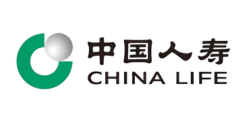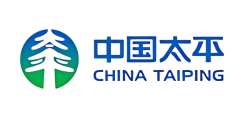
Why invest in Unit trust funds?
By combining funds from a pool of investors, unit trust furrnds allow diversification into a broad range of assets without the barrier of entry. This allows ease of participation in the potential growth and financial returns globally across a wide range of asset classes.
Read about: Investing Basics – Diversification
Depending on your investment objectives, unit trust funds can help you with your long-term wealth accumulation goals with generating:
- Long-term capital growth
- Stable stream of income payout
- Moderate growth and income payout
- Liquidity on capital investment
Learn more about the types of unit trust funds and how they help towards your wealth accumulation goals.
Read about: Investing Guide: Unit Trust Fund
1.) Capital growth in the long run (Growth funds)
The primary objective of growth funds is to maximise financial return for investors in the long run. The concentration of investments is typically focused on equities or securities of listed companies with higher than average growth compared to its peers within the market sector.

Growth companies tend to reinvest most of their earnings and profits back into the company for expansion, research and development and/ or acquisitions.
Characteristics of growth funds
In the short run, Net Asset Value (NAV) of the fund tends to be more volatile with little emphasis on dividend and yield payout. Technology related, financial and consumer discretionary companies tend to have a higher concentration within the portfolio.
Who should invest in growth funds?
Growth fund should form part of every investor portfolio with its allocation depending on the investor risk profile and investment objective. The investor must be prepared to have their funds invested for a longer period in the event of market changes.
As the funds typically do not payout dividend, investors must take profit at a suitable timing and reinvest into the sector that is expected to perform well in the current market cycle.
Read about: Effect of compounding returns on your investments
2.) Stable stream of dividend payout (Income funds)
The primary objective of the fund is enabling an investor to receive an income or yield over time. Income funds mainly invest into government and corporate debts and/ or companies with a stable and consistent record of paying a dividend.

The level of risks involved depends on the credit rating of the underlying debts as well the volatility of the securities the fund is invested into. Services, Utilities and Consumer Staples tend to be of a higher concentration in such portfolio as their earning tend to be more consistent in times of market volatility.
Characteristics of income funds
An Income Fund seeks to offer a form of regular payout to the investor. The payout can be monthly, quarterly, semi-yearly or yearly depending on the structure of the unit trust fund. Some unit trust funds have different share classes to cater to investors varying requirements.
Yields and payout are usually neither fixed nor guaranteed, as it is at the Fund Management discretion to distribute payout during times of extreme market volatility.
Who should invest in income funds?
Income Funds are particularly attractive to investors that prefer a higher level of stability and consistency in their portfolio while paying lesser attention to managing the portfolio.
Retirees and those nearing retirement could enhance the monthly income they receive from their annuities and CPF-Life payout with the intended regular income stream offered. For younger investors, Income Fund can be used to diversify and hedge the risks on their aggressive portfolio.
3.) Moderate capital growth with an dividend stream (Balanced funds)
A balance fund seeks to combine the capital appreciation from a growth Fund, with the income feature in an income fund. This category of funds may have a fixed or varying allocations in different asset classes to allow the fund to achieve its investment objectives.

The concentration of investments holdings varies depending on the strategy and objective of the fund manager during the different market cycles.
Characteristics of balanced funds
The capital appreciation offered may not be as attractive as a pure Growth Fund, and income yields may not be as high compared to a pure Income Fund. The diversified allocations could translate into higher stability during market volatility, but growth will be limited according to the allocation of the unit trust Fund.
Who should invest in balanced funds?
Investors that prefer a stream of dividend or income payout while hoping to profit from market upside would find Balanced Funds attractive due to having an income even when their portfolio is declining under an unfavorable market situation.
Funds may also offer the option to reinvest the dividend payout for additional investments units.This allows the benefits of higher capital growth when the funds NAV increases. At the same time, the additional units accumulated also allows you to receive a higher dividend payout on the next payment date.
4.) Liquidity on capital investment (Money market funds)
Money market funds mainly invest in lower risk and liquid short-term market instruments such as short-term deposits and government securities.

The fund is sensitive to market interest rate changes and provides the highest liquidity and capital stability at the risk of opportunities cost and capital growth.
Characteristics of money market funds
With its holdings mainly in short-term deposits (loans) to governments, financial and other low-risk corporate entities, an investor could potentially receive constant yield while reducing exposure to high market volatility in the short run.
The focus of money market funds is to enable capital liquidity while having a higher financial returns than traditional bank deposits accounts. Money market funds are usually not recommended for long-term financial growth or wealth accumulation.
Who should invest in money market funds?
Money Market Funds can be used as short-term holding instruments for investors wishing to hold their fund after taking profit or anticipating changes in market cycles.
How much of my investment portfolio should be in Unit Trust Funds?
Allocation should differ depending on an individual risk profile, investment objectives and financial goals. Even within unit trust Investment, investors should diversify their investment holding into the different geographical region and asset classes. Speak to a financial adviser to work out a suitable investment portfolio.
Read about: Investing Basics – Risk profile and investment portfolio
Read about: Investing Basics – Diversification
What can be used to invest in Unit Trust Funds?
You can invest in unit trsut funds using Cash, CPFIS-OA, CPFIS-SA or CPF-SRS.
Alternatively, Investment Linked Policies (ILPs) which are tied to an insurance product, also offers a selection of Unit trust funds you can choose to invest your insurance premium into. This allows you to get both insurance coverage and wealth accumulation at the same time.
Read about: Investment Linked Policy: How does it work?
Read about: 6 Best Investment Linked Policies for Wealth Accumulation (Updated)
Contact Us!
Or Whatsapp us to let a licensed financial adviser work out a proposal at no cost to you.
All financial reviews and proposals provided are 100% free of charge. There will be no obligation to take up any proposed financial products or services in any way.
We compare quotations head to head on all leading insurers in Singapore
Our Partners

Our Partners











